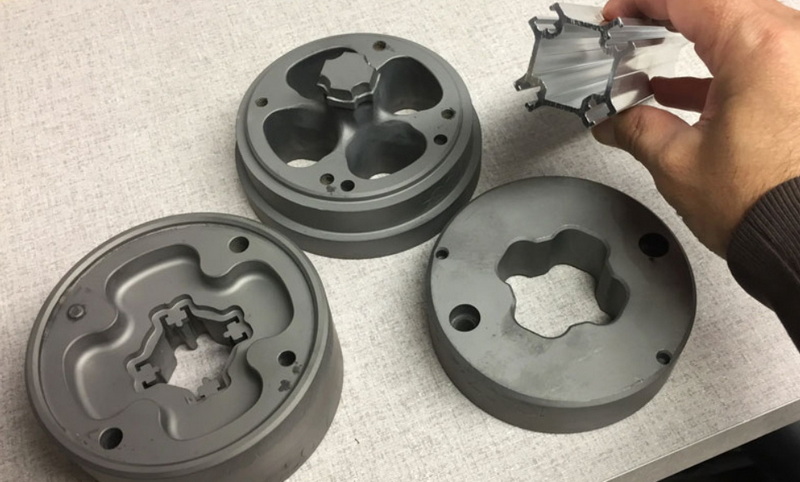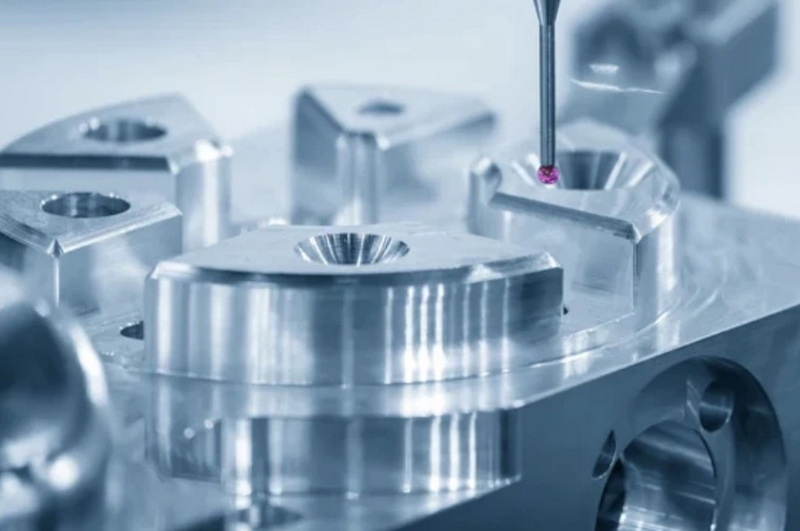Content Menu
● Understanding Aluminum Extrusion
>> The Role of Dies in Aluminum Extrusion
● Importance of Quality Control in Die Manufacturing
>> 1. Consistency and Reliability
>> 2. Reduction of Defects
>> 3. Cost Efficiency
>> 4. Enhanced Customer Satisfaction
>> 5. Compliance with Industry Standards
● Key Quality Control Measures
>> Raw Material Inspection
>> Process Monitoring
>> In-line Quality Checks
>> Post-Extrusion Inspection
>> Documentation and Traceability
● Challenges in Quality Control
● Advanced Techniques in Quality Control
>> Statistical Process Control (SPC)
>> Six Sigma Methodology
>> Lean Manufacturing Principles
● Future Trends in Quality Control
● The Impact of Quality Control on Business Performance
● Conclusion
● FAQs
>> 1. What are aluminum extrusion dies made from?
>> 2. How does poor die design affect product quality?
>> 3. What role does temperature play in aluminum extrusion?
>> 4. Why is post-extrusion inspection important?
>> 5. How can manufacturers reduce waste during production?
Quality control is a critical aspect of manufacturing, especially in industries where precision and reliability are paramount, such as aluminum extrusion. Aluminum extrusion die manufacturers play a vital role in the production of various aluminum products used across multiple sectors, including construction, automotive, and aerospace. This article delves into the significance of quality control in aluminum extrusion die manufacturing, exploring its impact on product quality, operational efficiency, and customer satisfaction.

Understanding Aluminum Extrusion
Aluminum extrusion is a process that involves shaping aluminum alloy by forcing it through a die to create specific cross-sectional profiles. The process begins with heating aluminum billets to a malleable state before they are pushed through the die using hydraulic force. The die's design directly influences the quality of the finished product. Therefore, maintaining high-quality standards during the manufacturing of these dies is essential.
The Role of Dies in Aluminum Extrusion
- Die Design: The design of the die is crucial as it determines the shape and dimensions of the extruded product. A well-designed die ensures uniform material flow and minimizes defects.
- Material Quality: The materials used to fabricate the dies must withstand high pressures and temperatures without deforming or wearing out quickly.
- Precision: Accuracy in die manufacturing affects the final product's dimensional tolerances and surface finish.
Importance of Quality Control in Die Manufacturing
Quality control in aluminum extrusion die manufacturing encompasses various measures aimed at ensuring that both the dies themselves and the extruded products meet stringent industry standards. Here are several reasons why quality control is vital:
1. Consistency and Reliability
Quality control processes help ensure that each die produced is consistent in terms of dimensions and performance. This consistency is crucial for manufacturers who rely on these dies to produce uniform products over time.
2. Reduction of Defects
Implementing rigorous quality control measures can significantly reduce defects in both dies and extruded products. This includes monitoring for issues such as surface imperfections, dimensional inaccuracies, and material inconsistencies.
3. Cost Efficiency
By minimizing defects and ensuring that dies perform optimally, manufacturers can reduce waste and rework costs associated with faulty products. Effective quality control leads to more efficient use of materials and resources.
4. Enhanced Customer Satisfaction
Delivering high-quality products consistently leads to increased customer satisfaction. Clients in industries such as automotive or aerospace have strict requirements for tolerances and performance; meeting these expectations fosters trust and long-term relationships.
5. Compliance with Industry Standards
Many industries have specific regulations regarding quality standards. Adhering to these standards not only ensures product safety but also helps manufacturers avoid legal issues and maintain their market reputation.
Key Quality Control Measures
To achieve high-quality standards in aluminum extrusion die manufacturing, several key measures should be implemented:
Raw Material Inspection
Before production begins, raw materials must be inspected for quality. This includes checking aluminum billets for chemical composition, mechanical properties, and any surface defects that could affect the extrusion process.
Process Monitoring
Continuous monitoring of the manufacturing process is essential. This involves tracking parameters such as temperature, pressure, and extrusion speed to ensure they remain within specified limits.
In-line Quality Checks
Automated systems can be employed to conduct real-time inspections during production. These systems use sensors to detect dimensional variations or surface imperfections immediately, allowing for quick corrective actions.
Post-Extrusion Inspection
After the extrusion process, thorough inspections are conducted to assess product quality. Techniques such as coordinate measuring machines (CMMs) are used to verify dimensional accuracy and surface finish.
Documentation and Traceability
Maintaining detailed records of each step in the quality control process is crucial for traceability. This documentation helps identify potential sources of defects and supports continuous improvement initiatives.

Challenges in Quality Control
While implementing quality control measures is essential, several challenges can arise:
- Complexity of Processes: The aluminum extrusion process involves multiple steps, each with its own potential for errors.
- Material Variability: Variations in raw materials can lead to inconsistencies in product quality.
- Equipment Maintenance: Regular maintenance of machinery is necessary to ensure optimal performance but can be time-consuming and costly.
Advanced Techniques in Quality Control
To address these challenges effectively, aluminum extrusion die manufacturers are increasingly adopting advanced techniques:
Statistical Process Control (SPC)
SPC involves using statistical methods to monitor and control processes. By analyzing data collected during production, manufacturers can identify trends or variations that may indicate potential problems before they escalate into significant defects.
Six Sigma Methodology
Six Sigma is a data-driven approach aimed at reducing defects and improving overall process quality. By focusing on identifying root causes of variability and implementing solutions, manufacturers can enhance their quality control processes significantly.
Lean Manufacturing Principles
Lean manufacturing emphasizes waste reduction while maximizing productivity. By applying lean principles to quality control processes, manufacturers can streamline operations, reduce cycle times, and improve product quality simultaneously.
Future Trends in Quality Control
As technology advances, new trends are emerging in quality control for aluminum extrusion die manufacturers:
- Digital Quality Management Systems: These systems allow for real-time monitoring and data analysis, enhancing decision-making processes.
- Automation: Increased automation in inspection processes can improve accuracy and reduce human error.
- Advanced Materials Testing: New testing methods can provide deeper insights into material properties, leading to better-quality dies.
- Artificial Intelligence (AI): AI technologies are being integrated into quality control systems to predict potential failures based on historical data analysis.
The Impact of Quality Control on Business Performance
The implications of effective quality control extend beyond just producing better dies; they significantly affect overall business performance:
- Market Competitiveness: Companies known for high-quality products often enjoy a competitive edge over their rivals. Consistent quality leads to brand loyalty among customers who prioritize reliability.
- Financial Performance: Reducing defects translates directly into lower costs associated with rework or scrap materials. This efficiency improves profit margins over time.
- Innovation Opportunities: With a solid foundation in quality control practices, manufacturers can invest more resources into research and development initiatives aimed at creating innovative products or processes.
Conclusion
Quality control is not just a regulatory requirement; it is a foundational element that underpins the success of aluminum extrusion die manufacturers. By implementing robust quality control measures throughout the production process—from raw material inspection to post-extrusion checks—manufacturers can ensure that they produce high-quality dies that meet customer expectations consistently. As technology continues to evolve, embracing innovative practices will further enhance quality assurance efforts, solidifying manufacturers' positions in a competitive marketplace.

FAQs
1. What are aluminum extrusion dies made from?
Aluminum extrusion dies are typically made from high-strength steel alloys designed to withstand high pressures and temperatures during the extrusion process.
2. How does poor die design affect product quality?
Poor die design can lead to defects such as uneven material flow, surface irregularities, or dimensional inaccuracies in the extruded products.
3. What role does temperature play in aluminum extrusion?
Temperature significantly affects the malleability of aluminum billets; proper heating ensures they are soft enough to be extruded without cracking or deforming.
4. Why is post-extrusion inspection important?
Post-extrusion inspection is crucial for verifying that finished products meet specified dimensions and surface quality standards before delivery to customers.
5. How can manufacturers reduce waste during production?
By implementing effective quality control measures that minimize defects and optimize processes, manufacturers can significantly reduce waste associated with rework or scrap materials.






















